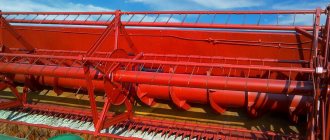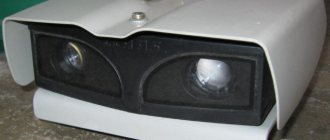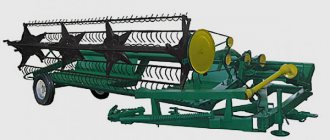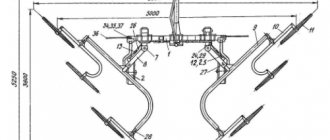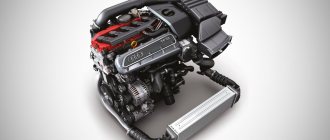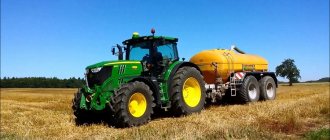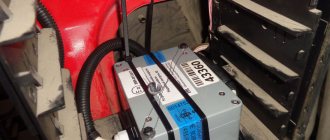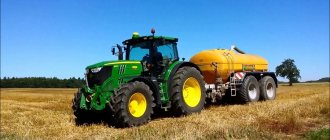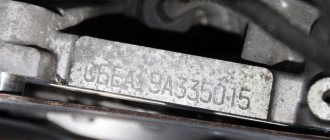Technological progress does not stand still, and people have not harvested their crops by hand for a long time. Most processes in the agricultural industry have been successfully automated. The harvesting process is no exception. Farmers successfully use a variety of techniques for this. One of these machines is the header. It is an attachment or a self-propelled mechanism for collecting ripened crops, which allows not only to significantly reduce work time, but also to minimize losses. Headers are made of metal, cast iron or steel. They are suitable for working with agricultural crops such as legumes, peas, corn, sunflowers, etc. One of the most important components is the knife - the moving part of the unit, assembled from several triangular plates. When the knife makes reciprocating movements, the plants are mowed.
Types of headers
All headers are conventionally divided into several large categories:
- Trailed headers are reliably protected from damage and deformation.
- Mounted headers are suitable for two-phase work, that is, not just mowing plants, but also laying them in windrows. The standard equipment of such models is a springless reel on which rake teeth are located, as well as an ejection window.
- Self-propelled headers - have the same functions as mounted ones, but allow for doubling of windrows (especially important if the season is lean). Such models are universal and are suitable for working with different agricultural plants (oil crops, grains, fodder and even hay).
Depending on the design, there are also side and front headers.
The number of conveyors installed in the nozzle is responsible for how many flows the rolls are formed. There are also platform and auger headers. The former allow for separate harvesting (cutting and placing in windrows), the latter are suitable for direct combining (mowing and then feeding the mass to the thresher). For highly specialized agricultural farms, it is preferable to choose either universal headers or those designed to work with a single crop.
Trailed roller header ZhVP-7.1 “MARYA”
The trailed header is designed for harvesting cereal crops and grasses in steppe and forest-steppe regions with windrowing.
A distinctive feature of the trailed harvesting header ZhVP-7.1 “Marya” is the use in the design of a modern Schumacher cutting system (Germany) with a planetary gearbox.
Peculiarities:
- The harvesting head is coated with polymer powder paint to protect it from the negative environment.
- Possibility of selecting a cut for most crops.
- High reliability during cleaning.
- High cutting speed during harvesting reaches 1000 knife strokes per minute.
- No cutting element adjustment required.
- Little downtime during cutting days when replacing elements of the cutting system.
Advantages:
- The trailed header at MTZ consists of an all-welded, powerful frame structure without division into the chassis and reaping parts.
- Belt-slat conveyor (five-strand) instead of a solid web, which provides great convenience during installation and preparation of the header for work, facilitates tension of the conveyor, increases reliability in operation, greater survivability (the header remains operational if four belts fail - on each of sides - 2 each), a low-cost option for repairs.
- The trailed grain harvester uses a Schumacher planetary drive mechanism, thereby ensuring the transmission of rotational motion into the translational movement of the knife during harvesting without any oscillations in other planes and vibration.
- The use of forged fingers does not require adjustment, which significantly reduces the complexity of installation work.
- The use of production cutter segments hardened over the entire surface ensures that it breaks and does not bend when foreign objects enter, which significantly saves financial resources when carrying out repair work. The cost of a knife segment is an order of magnitude less than the cost of a finger.
- The use of a composite knife back (2 meters) allows, if necessary, to quickly transport and replace it.
- The use of a bolted connection in a trailed header when attaching cutter segments instead of a rivet one allows you to quickly replace the segment.
- A special method of installing knife segments - alternately teeth up and down - allows for self-cleaning of the finger gap.
- High cutting speed (up to 1000 cutter strokes per minute) during harvesting makes it possible to mow grain into a windrow at a higher tractor speed.
- A hydraulic jack (hydraulic heel) makes it easier to transfer a trailed header from transport to working condition and back.
- The use of a hydraulic accumulator allows you to set the cutting level using hydraulics, which remains constant until a new reset. If necessary, the frame of the trailed header on the MTZ is raised hydraulically, and after the obstacle is cleared, it is lowered exactly to the set cutting level.
- A lever-spring stabilizer for lateral stability of the header is used, which prevents the trailed header from deflecting backwards when moving.
- Due to the large working width, the header forms a more powerful windrow, which significantly increases the productivity of the header when harvesting grain crops.
- Reliable imported variator timing belts are used.
The conveyors of the header are belt-slat, five-strand. Unloading window in the center of the header. After harvesting, the mown mass is placed on the stubble so that the ears are located on top of the windrow, which helps accelerate the ripening of the grain and its drying after rain.
For convenience, lifting the header to move the travel wheels to the working/transport position during the harvesting campaign is done using a hydraulic jack.
Specifications
| Name | Unit change | Indicator values |
| Working grip | m | 7,1 |
| Cutting height | mm | 80-250 |
| Shift production (8-12 hours) | ha | 70…100 |
| Working speed | km/h | 8,5-10,0 |
| Transport speed | km/h | 15 |
| Header width in transport position | mm | 2760 |
| dimensions | ||
| length | mm | 8900 |
| width | 4200 | |
| height | 1600 | |
| Weight | kg | 1800 |
Compatible with tractors of classes 1.4-3.0 (MTZ-82; LTZ-95; KhTZ-121, YuMZ)
What is a reaper for?
Depending on the specific type of equipment, the reaper is suitable not only for cutting stems, but also for transporting or laying the harvested crop. There are several main models of headers, which differ in functionality:
- Pulse headers - suitable for collecting and windrowing sugar beets, beans, green peas and laid down grain plants. They can also be used to mow field contours.
- Sunflower headers - for working with oilseeds, can be used in areas with difficult terrain and varied soil covers. Thanks to specialized components, the mechanism shows a high level of performance even in adverse weather conditions - frost, wind or heavy rainfall. As a rule, they are equipped with a basket for seeds, a vibrating conveyor with adjustable speed of movement and channel width. All this together allows you to work with different varieties of sunflower, corn or sorghum.
- Headers for oats, rye and wheat - their distinctive feature is the presence of a self-propelled chassis, as well as the ability to feed the cut ears to the combine thresher and place them in windrows.
- Corn headers allow you to adjust the cutting height and chop the stalk mass well.
- Windrow headers – designed for rice and laid down grains.
Why do they attach a header to the MTZ? Windrow headers
A header is a mandatory attribute of any grain harvester or forage harvester, but why does a tractor need a header? When, as a child, I saw a reaper attached to a MTZ, I decided that it was intended for a combine harvester, and the tractor simply delivered it to the work site. Of course this happens, but this time I was wrong. The header was designed specifically for working with a tractor.
Today we’ll talk about such an agricultural tool as a windrower.
We have already talked earlier about several methods of harvesting: direct and separate. In the first case, the harvester directly cuts the plant stems and threshes them.
With the separate method, before the combine with the pick-up comes into play, tractors or other combines equipped with windrowers must enter the field, cut the crop and collect the plant mass into windrows.
In this way, you can cut a crop that is not yet fully ripe, without waiting for the stage when the slightest mechanical impact causes the grains to fall out of the ears. The harvest ripens in cut form in windrows, after which it is collected by pickers and threshed by combines. This way it is possible to reduce the number of losses.
Windrow harvesters are trailed, mounted and semi-mounted. Accordingly, the first ones are attached to a tractor, the rest are hung on self-propelled grain harvesters. There are variations with mounts for self-propelled forage harvesters or self-propelled chassis.
Plant stems are cut with a cutting device. The reel prevents the plants from bending forward and directs the plants onto the conveyor, which moves the plant mass out the window.
Let's look at some of the reapers.
Semi-mounted roller header ZhVN-15, mounted roller header ZhVN-10, ZhVN-6
These headers are designed for harvesting cereal crops.
ZhVN-6
They are mounted on self-propelled combines. The design is quite classic. The cutting height is adjusted by raising or lowering the guide shoes. The coverage is 6, 10 and 15 meters respectively.
Combine harvester SK-5 Niva and harvester ZhVN-6
ZhVN-15 consists of two platforms, in the middle of each of them there is a window for forming windrows (after passing through the header, two windrows are obtained).
Mounted doubling header ZhNS-6-12
The ZhNS-6-12 header is mounted on grain harvesters. Creates a single swath from a strip of 6 meters or a double swath from a strip of 12 meters. A 12-meter strip is mowed either with one header in two passes, or with two headers. It turns out to be somewhat complicated and not clear. What is the point then, if the coverage of one header is 6 meters?
A special feature of the header is the ability of the platform to move to the right or left. This way we get the opportunity to open the window from either side. This is necessary to form one windrow with two headers.
The ZhVR-10 header with a coverage of 10 meters works similarly. When two such headers operate, a double windrow is collected from a strip of 20 meters.
Mounted wide-roll header ZhShN-6
This header is designed to place stalks in thin, wide windrows, with the ears predominantly facing upward. In ZhShN-6, the platform has a trapezoidal shape and the conveyor belts are located at an angle to the cutting device, due to which the plant mass is evenly distributed in the window.
In addition, due to the fact that the grain mass moves at an angle to the cutting device, the reel throws the ears onto the previously laid stalks. Thus, the ears appear at the top of the windrow.
Trailed windrower ZhVS-6
Unlike the previous ones, ZhVS-6 is attached to the tractor, and all mechanisms are driven by the tractor’s hydraulic system and through the power take-off shaft. The wheels of the header can be in two positions. In the working position, the wheels are located perpendicular to the cutting device, and the header itself is attached to the tractor through the main hitch located on the left side of the header.
In the transport position, the left wheel rises, and the right paired wheels turn parallel to the cutting device. In this case, a portable hitch is attached to the header. The windrow forming window is located in the center of the header.
Today, the range of windrow harvesters is huge. Even during the USSR, everything was not limited to harvesting grain. Models were created specifically for harvesting legumes, rice and others.
Thank you for being with us!!! See you soon!!! And be sure to like and subscribe to the channel!!!
Where does bread begin? Combine header and how it works
Crawler tractors in the assortment of the Belarusian MTZ
Altai T-402. A little about the descendants of the T-4A
Direct combining or separate. Two ways to harvest
That's all!!! Go to our new website shem33.ru , and also subscribe to our channels and groups on VKontakte , Odnoklassniki and Telegram and Yandex.Zen . See you soon!!!
Similar
Design and parameters of windrower headers
| v (km/h) | 5 | 8 | 10 | 12 |
| nm (min-1) | 30-37 | 47-48 | 50-52 | 53-54 |
In
windrower headers there is a design possibility of changing the position of the reel shaft in the horizontal and vertical plane. If the stems are erect, the shaft should be placed above the cutting device or moved forward to 20-25 cm so that the trajectory of the end of the rake fingers passes above the layer of stems at the end of the conveyor. On fallen and tangled stems, it is necessary to move the shaft forward 35-40 cm and lower it so that the rake fingers are closer to the field surface. Increase the reel shaft rotation speed to 60 min-1. Changing the position of the shaft in most windrowers is done using hydraulic lifting mechanisms.
Cutting devices
headers - normal cutting (knife run is single, that is, three inches - t=t0=S=76.2 mm). In high-speed headers, the stroke S is 80 mm. To harvest rice and legumes, fingerless cutting devices are mounted on the headers, based on two segmental knives (one of the knives is stationary). The knives are driven by a swinging washer mechanism or lever mechanisms.
Transport devices
necessary for moving cut stems to the ejection window and forming windrows from them. These devices are manufactured as belt- or canvas-slat. The belts move at a speed of 2.5-3.5 m/s. High-speed (v = 12-15 m/s) headers correspond to the highest values. The conveyors are driven by V-belt, chain transmissions or a hydraulic motor. The tension of the canvases and belts of conveyors is carried out by displacing the driven shaft.
R
Adjusting the cutting height is done by changing the position of the shoes or support wheels relative to the frame. By changing the compression of the springs of the balancing mechanisms, the pressure force of the wheels and support shoes is regulated. When lifting the header by the divider, this force is 250-300 N.
D
For mowing and windrowing grain crops, the ZhVN-6A (reaper working width is 6 meters) and ZhVR-1 (reaper working width is 10 meters) are used. They are mounted on the Yenisei-1200 and SK-5M combines. Trailed headers PN-320-6P and ZhVP-6 are also used, which are mounted with tractors of traction class 1.4. Self-propelled harvesters ZhVN-12A and ZhS-6, as well as their modifications, are used in conjunction with the Don-800, KPS-5-G, and Slavyanka energy vehicles. The working speed of the headers is 8-12 km/h.
D
To harvest sugar beet seeds and leguminous crops, the ZhRB-4.2A (attached to a combine harvester) and ZhSB-4.2P (combined with the Don-800 and Don-101A power equipment) are used.
TO
The combine harvester ZHRK-5M or another modification of the harvester with an energy source is used for separate harvesting of rice and other crops.
Their operating speeds reach 8 km/h. A separate direction in the universalization of windrower headers includes the production of wide-cut header headers, which mow and place grain crops in the windrow, which are harvested not only separately, but also by direct combining.
